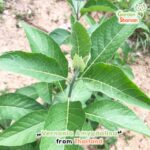- The most important basics of food preservation
- Traditional preservation methods in detail
- Modern conservation techniques
- Storage and shelf life
- Avoid common mistakes
- Concluding thoughts and summary
Did you know that every German throws away an average of 78 kg of food every year? That's about 235 euros of wasted money - per person!
With the right methods, you can preserve your food and keep it fresh for months. Whether classic preserving, modern vacuum packing or natural fermentation - there are many tried and tested techniques that you can easily implement at home.
From grandmothers to professional chefs - knowing how to preserve food properly has always been valuable. Today it is more important than ever, because it not only helps to save money, but also protects our environment.
In this detailed guide, we show you step by step how to use different methods to preserve food safely and successfully. From traditional recipes to modern techniques - you'll find all the important information here.
1. the most important basics of food preservation
Before you start preserving food, you need to know some basic principles. These basics are the key to the success of your preservation projects.
Importance of proper hygiene.
The Hygiene plays a central role in preservation. It not only ensures that the food is safe for human health, but is also essential for quality assurance. Temperature control is particularly important - bacteria multiply most quickly at around 37°C, i.e. close to human body temperature. By consistently cooling below 7°C, you can effectively prevent the growth of many harmful germs, such as salmonella.
Necessary tools and equipment
You will need the following basic equipment for successful canning:
- Preserving jars with screw caps
- Heat-resistant measuring cup
- Vegetable brush for thorough cleaning
- Fermentation pots for fermentations
- Sterilized containers and tools
Selection of suitable foods
When selecting your food, you should pay particular attention to quality and ripeness. Only use fully ripened and undamaged products. The more easily utilizable the nutrients in the food are, the more perishable they are - for example fish, meat and dairy products. The pH value also plays an important role: microorganisms grow best in the neutral to slightly acidic range.
Also note that foods with a high protein content should be viewed particularly critically. The water content is another important factor - the higher it is, the faster bacteria can multiply. By removing water, for example in the production of dried milk powder, you can significantly extend the shelf life.
2 Traditional preservation methods in detail
Traditional methods of food preservation have been tried and tested over generations and are more relevant today than ever. You can preserve your food naturally and effectively using these tried-and-tested techniques.
Canning and preserving step by step
When preserving, food is preserved by applying heat between 75°C and 100°C. Follow these steps for optimum results:
- Sterilize the jars and lids (10 minutes at 140°C in the oven).
- Prepare food and fill into jars
- Fill the jars to 2 cm below the rim
- Clean the edge carefully
- Seal the jars and place in a bain-marie
Preserving without electricity
One of the most proven methods is the Salting and curing. The addition of curing agents such as table salt removes the moisture from your meat or fish. You should consume the cured food within a few months.
Fermentation and lactic acid fermentation
Fermentation is a traditional technique for preserving food. During lactic acid fermentation, carbohydrates are converted into lactic acid. The most popular fermented products include
- Sauerkraut
- Kimchi
- Yogurt
- Sourdough bread
- Pickled vegetables
Fermentation is not only important for preservation, but also increases the bioavailability of nutrients.
Drying and dehydrating done right
When drying, you remove the water from the food using heat and air circulation. With a residual moisture content of 8 to 20 percent, the food contains only minimal water, so that microorganisms cannot multiply.
The ideal temperature is between 30 and 70 degrees. Dried foods are real "power packs": The removal of water concentrates the ingredients such as fiber, vitamins and minerals. For example, 100 grams of dried apples contain four to five times as many calories as 100 grams of fresh apples.
ImportantCheck the food regularly during drying. The dried fruit or vegetables should still be slightly elastic and no damp patches should be visible when cutting.
3. modern conservation techniques
Modern technology has revolutionized the possibilities of food preservation. With innovative methods, you can now not only keep your food for longer, but also preserve its quality better.
Vacuuming and sous-vide
Vacuum packing is one of the most effective modern preservation methods. By removing air, the shelf life of your food is extended by three to five times. The "dangerous" temperature range between +20°C and +40°C, in which microorganisms multiply most quickly, is deliberately avoided.
At the Sous-vide process you combine vacuuming with gentle cooking. The advantages are impressive:
- Nutrients and flavors are optimally preserved
- No contamination from outside air possible
- Perfect control over cooking temperature and time
- Ideal preparation for later use
Blast freezing and deep freezing
Shock freezing at around -40°C is a revolutionary method of preservation. Unlike conventional freezing, only microscopically small ice crystals are formed here, which do not damage the cell structure of your food.
Particularly effective is the Cold air freezing processin which fast-moving, cold air flows around the food. The cryogenic deep-freezing process with liquid nitrogen at -196°C is particularly suitable for meat and fish products.
Innovative packaging methods
The latest generation of packaging technologies offers impressive possibilities for preservation. Barrier packaging not only protect your food from external influences, but can also actively contribute to extending its shelf life.
Modern packaging solutions offer several advantages:
- Extended shelf life thanks to special barrier layers
- Reduction of food waste
- Protection against drying out and loss of aroma
- Optimal product visibility in retail
The development goes even further: intelligent or smart packaging materials can monitor the current quality status of your food and communicate it to the outside world. This innovation allows you to keep an eye on the freshness of your food at all times.
4. storage and shelf life
Storing your preserved food correctly is the key to a long shelf life. With the right conditions, you can optimally preserve the quality of your supplies.
Create optimal storage conditions
The ideal storage temperature depends on the preservation method. For chilled products, the optimum temperature is between +2 and +8°C. For deep-freeze storage, a constant temperature of at least -18°C is required.
For dry food, you should choose a storage room with the following properties:
- Maximum humidity 70%
- Temperature between 18 and 22°C
- Protected from light and well ventilated
- Clean and hygienic
Shelf life of different methods
The shelf life of your preserved food varies depending on the method:
| Conservation method | Food | Shelf life |
|---|---|---|
| Preserving | Jams, vegetables | |
| Drying | Fruit, herbs | up to 1 year [271] |
| Deep freezing | Meat, vegetables | 9-12 months |
| Lactic acid fermentation | Sauerkraut | |
| Soaking in alcohol | Fruits | several months [271] |
Important: You can extend the shelf life of vacuum-packed products by three to five times, provided the cold chain is not interrupted.
Quality control and monitoring
You should carry out regular checks to ensure safe storage. Pay particular attention to:
- Tightness of the closures for boiled-in products
- Constant temperature in fridges and freezers
- Signs of mold or discoloration
- Unusual odors
The "first in, first out" principle applies to storage: always put new supplies at the back and use older ones first. Label all containers with the contents and date of preservation.
For optimum monitoring, it is advisable to keep a stock list. This will help you keep track of your supplies and their expiration dates. Check the temperature of your storage rooms regularly - especially in summer, when higher outside temperatures can affect storage.
It is important to regularly check the acidity of fermented vegetables. The pH value should be below 4.5 to prevent the growth of harmful bacteria. Also make sure that pickled food is always completely covered by the preserving liquid.
5. avoid common mistakes
When preserving food, small mistakes can have big consequences. Find out which typical pitfalls you should avoid and how you can recognize quality problems at an early stage.
Typical beginner mistakes
The most common mistakes when preserving are often caused by a lack of preparation or incorrect assessment. The following are particularly critical:
- Insufficient sterilization of glasses and tools
- Filling temperature too low (should never be below 80°C)
- Creative experiments instead of tried and tested recipes
- Incorrect storage temperatures and direct sunlight
- Use of damaged or outdated sealing rings
Particularly importantDo not use kerosene wax to lubricate the rubber bands, as this prevents the vacuum from forming and bacteria can penetrate.
Recognize signs of spoilage
Early detection of signs of spoilage is crucial for your health. Pay particular attention to the following warning signs:
Signs of spoilage
| Affected products | Required measure |
|---|---|
| Inflated lids | Dispose of immediately |
| Preserves, jars | |
| Slimy surface | Do not consume any more |
| Meat, sausage, cheese | |
| Discolorations | Disposal in case of conspicuousness |
| Preserves | |
| Unpleasant odor | Dispose of immediately |
| All products | |
| Loose lids | Can be boiled down a second time |
| Preserving jars |
Important note: The spores of the dangerous bacterium Clostridium botulinum can survive in low-acid foods such as vegetables and meat. These produce toxins that can lead to severe food poisoning.
Problem solving and troubleshooting
If problems arise, you can often intervene:
- If there is no vacuum:
- Check sealing rings for damage
- Check the edges of the glass for damage
- With intact contents: re-boiling possible
- If spoiled too quickly:
- Increase the boiling time
- Check the storage temperature
- Only use flawless ingredients
Security measureHeat meat or vegetables above 80 degrees for at least 5 minutes before eating. For low-acid foods, we recommend boiling twice after 24 hours.
For successful conservation, the Basic contamination is crucial - the lower the initial bacterial load, the better the shelf life. Pay particular attention to strict hygiene with foods containing protein, as these are particularly susceptible to spoilage.
Practical tipPortion your preserved food into smaller quantities. This minimizes the risk of larger quantities spoiling due to improper removal or storage.
6 Concluding thoughts and summary
Properly preserving your food not only saves money, but also actively contributes to protecting the environment. You can preserve your food safely and effectively using the methods presented - from classic preserving to modern vacuum packing.
The key to success lies in the consistent application of basic principles: impeccable hygiene, optimum storage conditions and regular quality checks. These aspects are crucial for the long-term shelf life of your preserved food.
Pay attention to the warning signs and typical sources of error described. With careful preparation and the right technique, you will quickly become an expert in food preservation. Your pantry will be filled with high-quality, home-preserved food - healthy, sustainable and cost-saving.














